Planes, Trains, and Automobiles (and Boats and Bikes!)
Rolling with the punches when your travel gets disrupted
Dear Readers,
I’m back! We returned from our trip to Europe last Saturday night and I’m already in a different timezone on a university locum block 🤪 Lenore and I had a great time overseas, although as you’re about to read, the journey to Paris was quite harrowing. Here’s the story of our chaotic airport shenanigans, the conference, and our first impressions of Amsterdam.
—Eric
TPA → ATL → IAD → LHR → LTN → CDG
It was supposed to be a simple Friday night red eye: Tampa to Atlanta for a connecting flight to Paris. Easy, right?
Our first clue for the problems ahead should have been that the airport was busier than we’d ever seen. At the time, we chalked it up to travel for college graduations and Mother’s Day. We soon found out that while those likely played a role, many flights had also been delayed by storms across the southeast in the previous 48 hours.
After boarding uneventfully, we just…sat there. Fifteen minutes went by, then 30. The pilot made an announcement over the intercom:
<stereotypical airline pilot voice> “Folks—uhhhhhhhh—this never happens, but there’s a bunch of flights ahead of us on the runway, maybe 15 planes or so. We’ll let you know as soon as we can get off the ground.”
Uh-oh.
In the end, we took off over an hour late 😬 During the flight, we were glued to the app tracking flight progress versus the boarding time for our connection; it was perilously tight. We might make it, but the odds looked against us.
As we began our descent, we asked the flight attendants if they could help passengers at risk of missing their flights to deplane first, but a bunch of other passengers had the same issue. Making matters worse, there were further delays taxiing after landing and finding a gate since so many other flights were also delayed and re-routed.
By the time we got off the runway, our international flight had been boarding for about an hour and was likely to close the gate any minute. Our gate was on the complete opposite end of Terminal E. If you’ve never been to Hartsfield-Jackson, it is a huge airport and this distance is about half a mile! I sprinted at max effort with my luggage to try and get them to hold the plane for us. I got to the gate in about 4 minutes, sweating and lungs burning, but it was too late. They left without us.
Coughing from exercise-induced bronchoconstriction, we walked to the Delta help desk where an enormous line of other stranded passengers were queued up. Some had missed flights multiple consecutive days due to airline issues. We ended up calling their customer service number while waiting in line to improve our odds of salvaging the trip. The agent was very kind and helpful, but as much as they tried, all flights to Paris for the next three days were completely booked. Finally, we asked if they could just get us somewhere, anywhere, close in Europe, and they put us on a Saturday flight to Washington D.C. followed by London.
We crashed at a nearby hotel, and after a quick lunch we went to the airport four hours early, taking no chances for part two. When we were sitting at the gate waiting to board the flight to DC, there was yet another delay—the cleaning crew was taking forever, almost an hour! Multiple people went up to the representative at the counter to see if they could speed it up and they just shrugged and said they had no control over the maintenance folks.
Incredibly, we once again faced missing our connection due to matters out of our control 🤬 After a nerve-wracking flight we landed. Our next plane was again boarding already. However, this time we didn’t face a long taxi behind other jets and the gate at Dulles was closer. We got on board with a few minutes to spare and breathed a sigh of relief.
We slept light on the red eye and got into London Heathrow on Sunday. This was not the end of our journey, however. We were unable to find a train from London to Paris because of a strike that disrupted their schedules, so we booked a short regional flight on EasyJet out of a different airport in the suburb of Luton. After a nap, we were starving and found a random Albanian restaurant that had good reviews. We were probably the only non-Albanians in the whole place and the wait staff doted on us. We gorged on a platter of grilled lamb, frites, and other meats. They brought us complimentary shots of some random melon liqueur and asked if we wanted to try their Albanian Trilece cake (basically their version of tres leches); we tend to follow the “When in Rome” philosophy, so we said yes and were delighted we did!
Monday morning, we got up at the crack of dawn and flew across the English channel to our original destination 🥱💤
Nous Sommes Arrivés
Three days of travel across five airports later, and an Uber ride that was longer than the flight due to insane traffic, we arrived at our hotel with a mere 90 minutes to spare before starting our lectures 😅 We quickly wolfed down a breakfast of croissants and charcuterie and freshened up to be a little less gross for the audience.
The events were in a charming old building a few blocks away that housed an eclectic mix of a cafe, adult learning center, offices, and a mental hospital. We quickly worked through some IT issues and got going.
Our audience was capped at 35 attendees, making it cozy and intimate. There were a few familiar faces, including one of Lenore’s classmates, a former Auburn vet student, and a BluePearl emERge doctor we’d both taught. Everyone immediately got comfortable, making jokes and asking questions. Interactive participation is great for speakers; nothing is more awkward than feeling like you’re shouting into the void and getting nothing back.
I recently overhauled my lectures with new content and images, even a new workflow to make the case examples more engaging. I swapped out still images for virtual microscope slides wherever possible and used QR codes so folks could pull up the scans on their phones and tablets to explore on their own as I walked through the cases. You can see an example of what this looked like here1:
Overall, people seemed to enjoy the talks and gave us great feedback afterwards. One memorable line that made me laugh was:
“Your acid-base lecture was the one I hated the least in my career!”
Trust me, I can relate to the sentiment and took it as a compliment! Acid-base physiology was definitely not my favorite subject in school, and I “inherited” those lectures when I became faculty at Auburn because no one else wanted to teach it. I worked hard to simplify the material and make it as practical as possible.
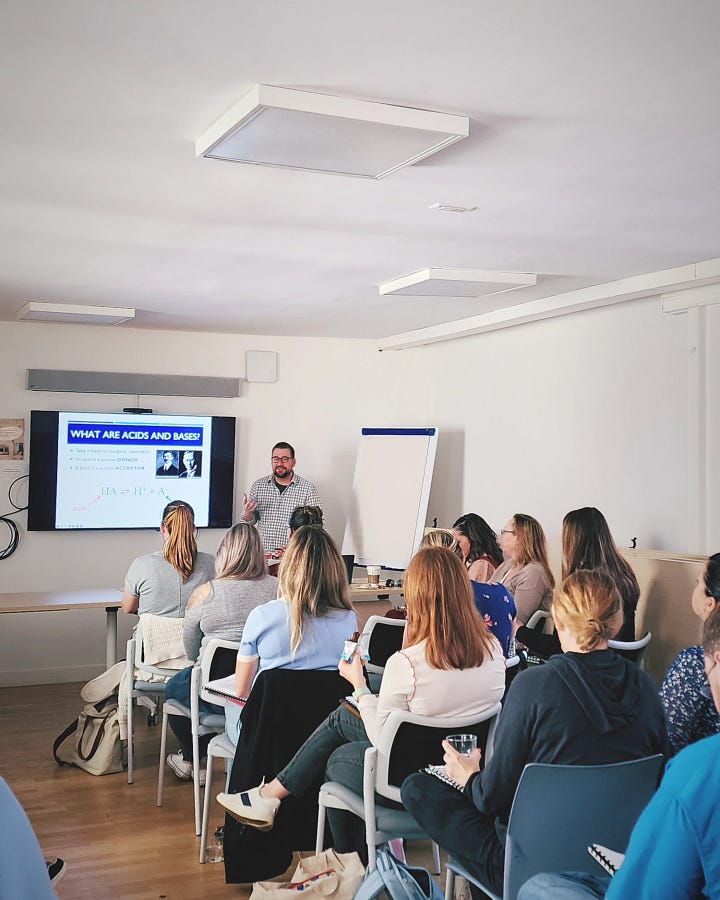
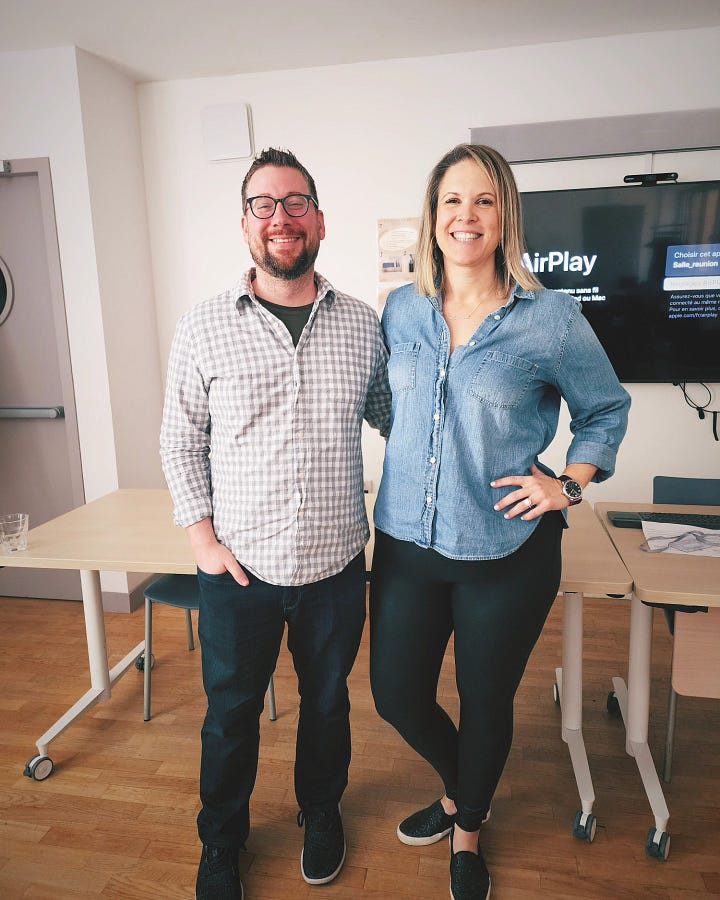
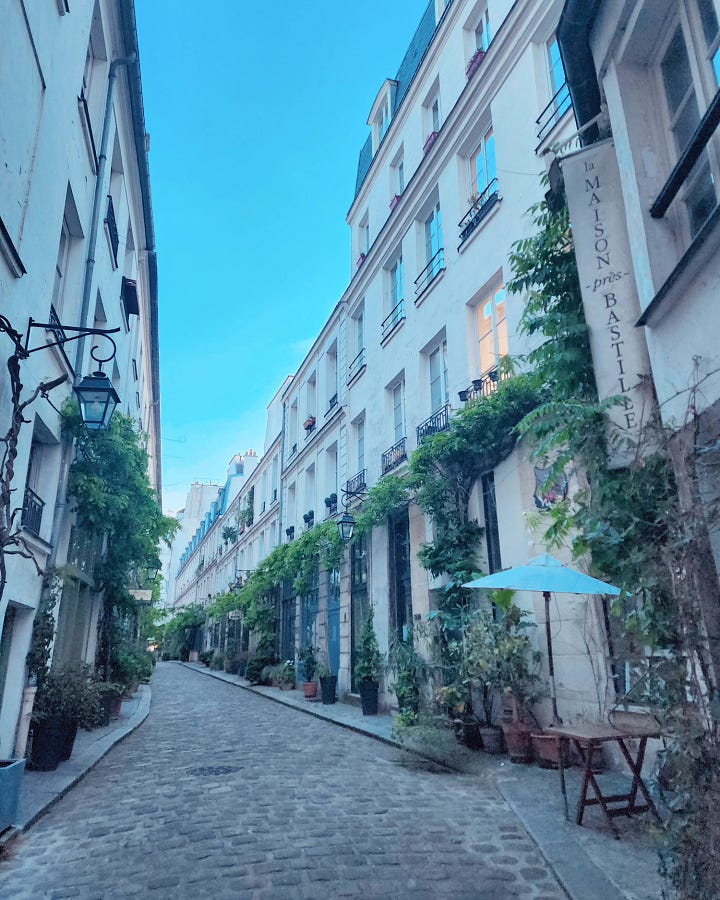

Despite the travel difficulties and spending three of the days working, we still managed to do some sightseeing and relaxing during our down time. We had previously done a lot of the tourist-y stuff like the Eiffel Tower and the Louvre when we visited in 2016 (for a different conference, in fact), so this time we focused more on exploring little neighborhoods and sampling great French food and wine all over town. In a great example of how small of a world it really is, we were getting gelato at a shop across the street from the hotel when the proprietor asked where we were from. When we said Florida, he asked where, and we responded Tampa. His face lit up: he was a dual citizen of both France and the US and had spent decades in Sarasota, just down the coast from us!
The Dam on Amstel
Finally, Thursday morning we took a train from Paris to Amsterdam to spend a few days in the Netherlands, where neither of us had ever been before. We stayed in a cute AirBNB in the Jordaan (pronounced '“Your-don”), which was formerly a humble working class neighborhood that is quickly becoming gentrified, although it is not yet overrun with tourists.
Amsterdam is a relatively small city given its international reputation, with less than one million residents in the city proper. This no doubt contributes to its more relaxed feel than other big urban metros. (That the place is also very dog-friendly and full of chill cats wandering in and out of shops also helps). Everyone we met was friendly and happy to provide assistance or recommendations when asked, which was easy because most people speak excellent English. I continue to be astounded and ashamed that most people in other countries are fluent in 2-3+ languages while most Americans, myself included, are monolingual. It was also interesting trying to decipher Dutch writing everywhere as it is close linguistically to English and German.
The name of the city literally translates to “the dam on the Amstel river,” and it rose to prominence in the 17th to 19th centuries as a major shipping port. To facilitate all of this boat traffic, they dug an extensive series of canals, giving it the nickname “Venice of the North.” Today, they are lined by narrow canal houses (many of which are leaning cattywampus due to being built on drained swamps) and cute houseboats that were once an economic solution to refugees after WWII, but today represent one of the most expensive ways to live in Amsterdam due to the limited permits and prime real estate. We learned about this history and many other landmarks on a wonderful 2-hour boat tour throughout these criss-crossing waterways.

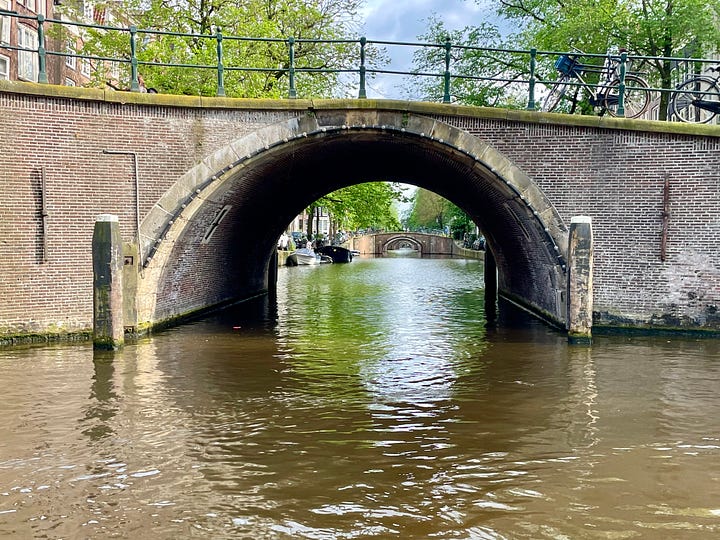

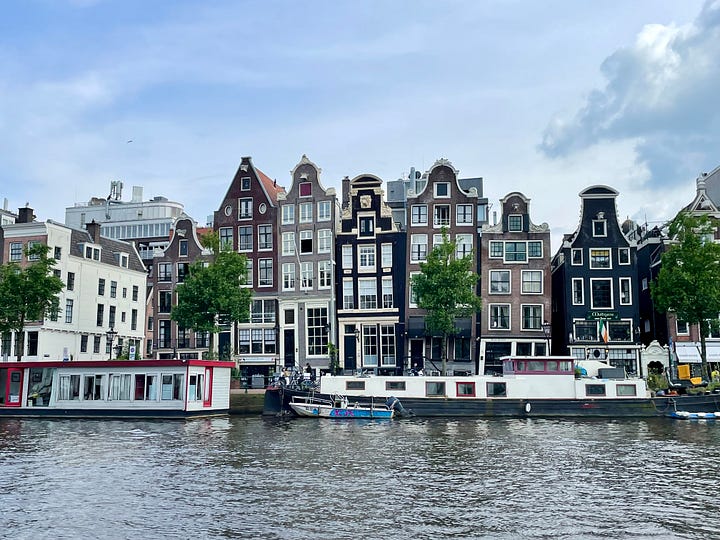
If Amsterdam is most known for its canals, probably the second most iconic aspect of the city is the ubiquitous bicycles. It is one of the most bike friendly cities in the world and they dominate traffic on the roads over both cars and pedestrians. On our second day, we took a bike tour all around town, guided by a delightful older gentleman who shared his life experience from 60 years in the city. The Dutch are also frank and speak their minds, and I respected that he scolded some of the rude New Yorkers on our tour who were glued to their phones while he was talking.
During these multiple tours, the guides did not shy away from the darker parts of Amsterdam and the Netherlands. Their growth and riches were fueled by the Dutch East and West Indies companies, which made money off of the Atlantic slave trade and colonial rule of countries in Africa, Asia, and Latin America. And while the city was traditionally a safe and welcoming place for Jewish people, small gold plaques marking Jews who were taken during the Holocaust (such as Anne Frank) dot the sidewalks across town. It is incumbent on all of us to learn from the horrors of the past and countries like Germany and the Netherlands take this responsibility seriously. While it is not always “fun” to face these uncomfortable facts, I feel strongly that as someone privileged enough to travel the world for work and pleasure, this is the “eat your vegetables” part of the journey that balances out the hedonic parts.
Even though we were only in Amsterdam for 48 hours, it felt like longer because we packed in a ton. Besides biking and boating, we visited the national Rijksmuseum dedicated to Dutch history and art (which contains a number of paintings from one of the most famous Dutchmen: Vincent Van Gogh), had a few beers at the original Heineken brewery, and noshed on local grub like “bitterballen.” I can’t wait to return in the future 🚲🍻
Fin
For any new readers who signed up during Traveling Vet Retreats wondering “Is this actually just a travel blog? Where is the CE content?” I would direct you to the link below that contains dozens of articles, infographics, and the case gallery. Also, if you’d like to sign up for a paid subscription, make sure to email me to get the TVR conference discount! I hope you enjoyed reading about our trip, and I’ll be back to posting more regular vet CE and science content in the coming days 🤓
🔬CE Center
Welcome to the Continuing Education (CE) Center! Here you will find dozens of continuing education articles and lecture presentations in addition to the case bank of images of numerous tumors, infectious organisms, and more!! 🤓🔬 Please Note: All articles, photos, presentation files, and other resources on this page are my original work and copyright
Kate did not ask me to promote her companies and I received no money or other benefit for doing so; we have been friends since residency and she was kind enough to let me use some of her digital case examples while I scan my own collection, which I wanted to provide appropriate credit for





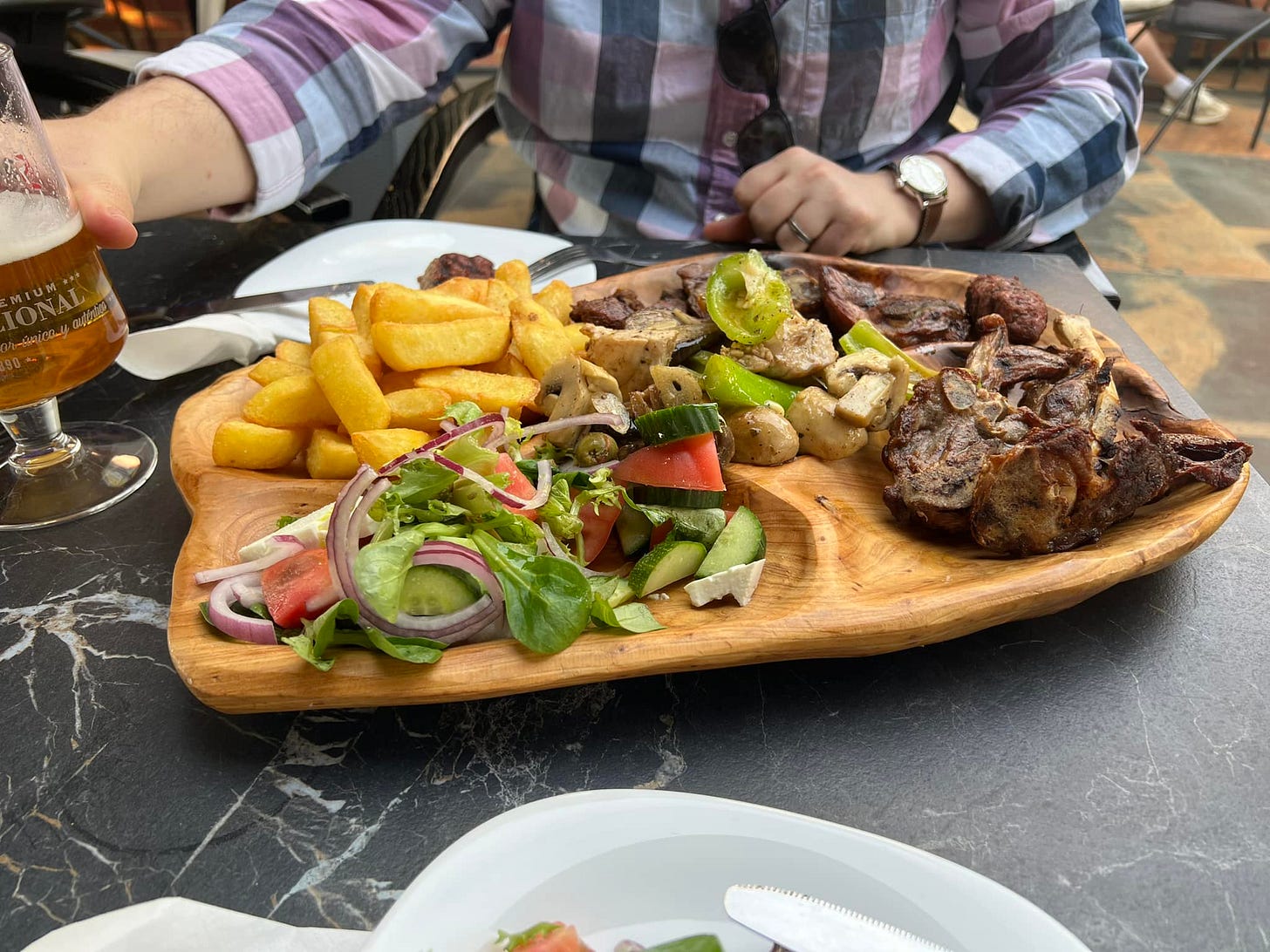
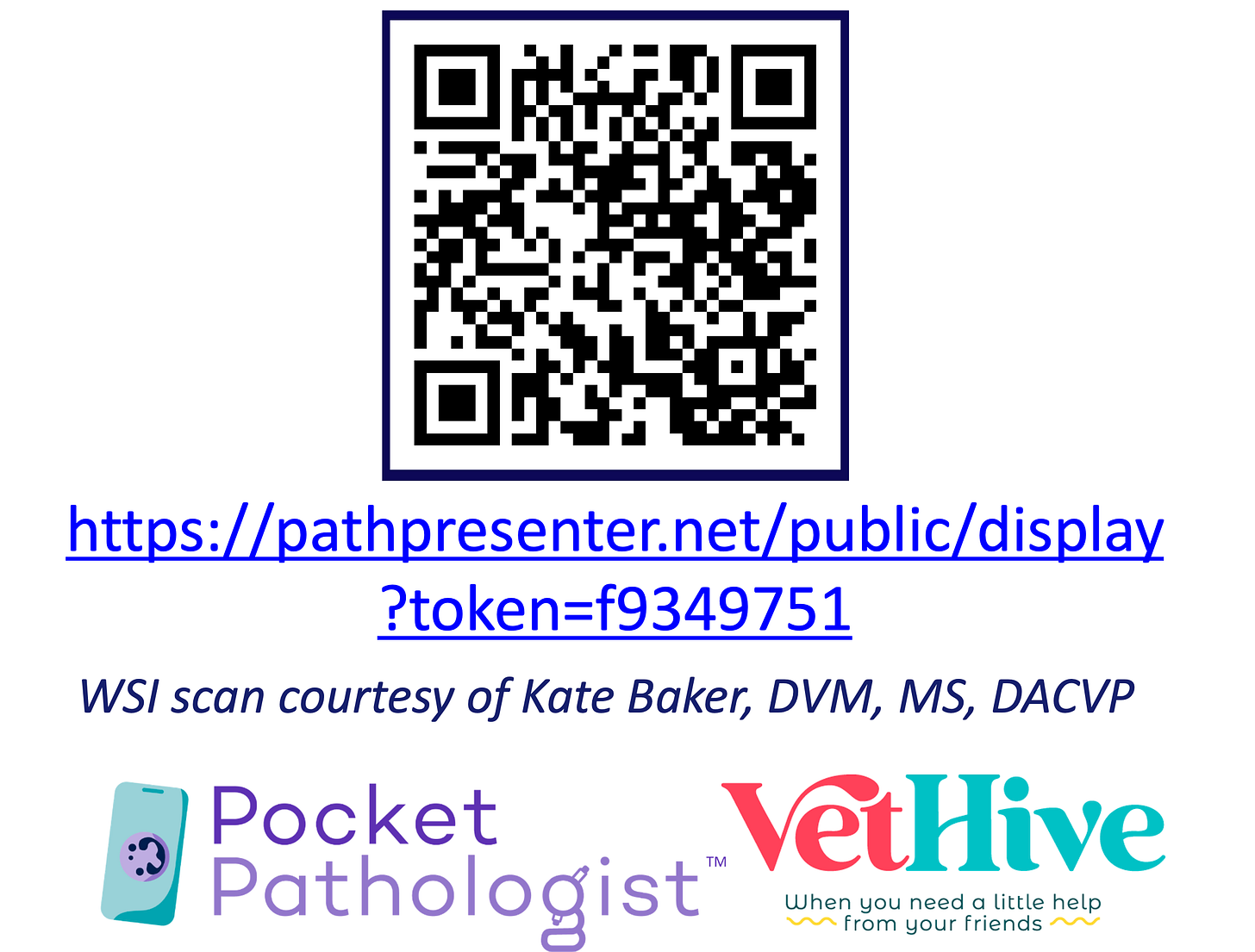
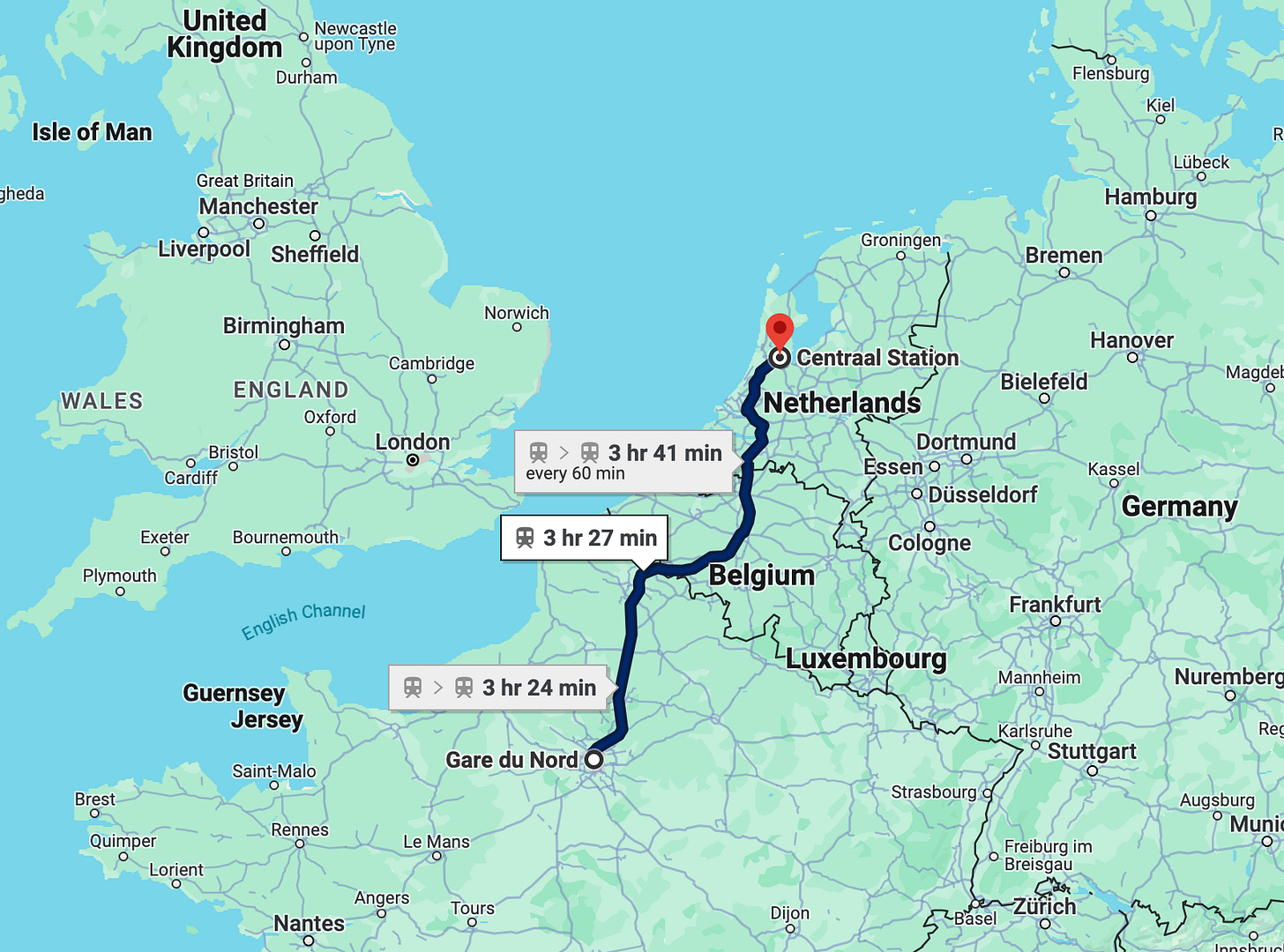


Excellent trip! Thanks for sharing, and you have me all excited about reviewing chemistry and visiting Amsterdam, which is quite a unique accomplishment! off to bed now, will revisit this post, and maybe ask a quick question or two about Jordaan and the bike tour specifics.
Great trip and a nice report. One comment... I LOVE teaching Acid-Base physiology. Somehow I got sucked into it early and have taught it off and on for nearly 40 years.